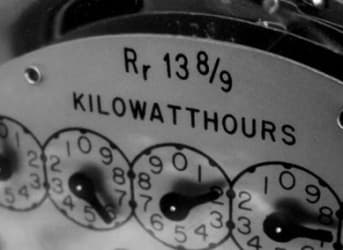For a subject that more often than not draws blank stares at dinner parties, energy efficiency has an uncanny ability to provoke controversy among analysts and policy makers alike.
The latest study to dispute its benefits has once again ignited a debate between those who question the value of federal and state subsidies for efficiency programs, which they argue, have questionable returns. Leaving aside the highly technical debate over modeling efficiency – and the more personal friction between engineers and economists – the policy implications are significant.
Energy efficiency is widely considered the most important energy source today, with positive effects ranging from lower energy costs, to boosting the local economy, to improved health outcomes and social wellbeing. Nowhere is this more true than in the state of California.
The controversial paper, published in June, posits that the costs of implementing the U.S. Weatherization Assistance Program outweigh the benefits in terms of efficiency savings. The findings have been disputed by the Natural Resources Defense Council and Illinois Institute of Technology, among others.
More broadly, however, it once again brings into question the value and purpose of energy efficiency programs in the United States. In California, the state that has arguably had the most success with increasing energy efficiency, the debate continues. Since 1975, California’s energy use has essentially plateaued, while consumption per capita in the rest of the United States has almost doubled. It is widely accepted that California’s energy efficiency programs are at least partly responsible. Related: Spanish Government To Tax Solar Power
(Click to enlarge)
Opponents dispute the extent to which the benefits can be attributed to green policies and programs that have spanned everything from fuel efficiency standards, to appliance ratings, to weatherization, to simply better communicating the importance of energy savings to Californians. In a 2008 study, Stanford economists found that only 23% of the difference between California’s energy use and the U.S. as a whole was attributable to policy. Still, if this is to be considered the lower end of the range, it remains a significant figure.
The remainder, they argue is attributable to structural factors, including California’s mild climate and high energy costs. While Californians may save on winter heating, the high incidence of air conditioning in the nation’s southwest surely undermines the first argument. As for the second, in spite of higher energy costs, Californians’ energy bills are lower than the rest of the country.
The cost of energy efficiency programs start at less than 2 cents per kilowatt hour (kWh) when low hanging fruit is still an option. That cost will rise as the market matures to 3 – 5 cents/kWh. A report by the American Council for an Energy Efficient Economy analyzed energy efficiency programs across 20 states from 2009 – 2012, finding an average cost of 2.8 cents per kWh, cheaper than any other energy source and certainly cheaper than generating power in a state like California. Related: Why We Should Get Used To Low Oil Prices

According to the California Public Utilities Commission (CPUC), the efficiency standards are saving over 5,700 GWh per year. The CPUC estimates this as the equivalent of taking 600,000 California households off the grid and saving 356,000 tons of CO2 emissions.
These savings directly impact the broader health and wellbeing of California’s residents, as less power plants are needed and more efficient vehicles means cleaner air. Efficiency programs can also support the greater deployment of renewable energy. By targeting efficiency measures to certain times of the day, they can help flatten the demand curve, thus facilitating the use of intermittent renewable power sources such as wind and solar. Related: Oil Price Plunge Raises Fears for Indebted Shale Companies
Additionally, California’s energy efficiency programs have contributed to a thriving green market, with tens of thousands of companies offering a variety of goods and services to meet the state’s efficiency and clean energy targets.
The global efficiency market is also growing. The International Energy Agency (IEA), ExxonMobil and BP have all identified "energy efficiency" as a leading energy source in the coming decades. According to ExxonMobil’s 2040 energy outlook, the coming decades will see a decoupling of global GDP growth and energy consumption, with energy savings filling the gap.
IEA estimate that investment in global energy efficiency came to between $310 and $360 billion in 2012. This was larger than supply side investment in power generation from renewables, coal, oil, or natural gas. And efficiency markets are expected to continue growing worldwide.
Together, these efforts don’t just mean cheaper energy for consumers. They mean a reduction in our carbon footprint, economic opportunities, and improved health outcomes in many parts of the world.
Improvements can be made in the monitoring and oversight of energy efficiency programs, to ensure that the benefits do outweigh the costs. But overall, energy efficiency has shown remarkable gains in a relatively short period of time in places like California, and this is just the beginning.
By Alexis Arthur of Oilprice.com
More Top Reads From Oilprice.com:
- OPEC, Get Ready For The Second U.S. Oil Boom
- Historic Deal With Iran Opens Up Oil Industry
- The Multi-Trillion Dollar Oil Market Swindle



















